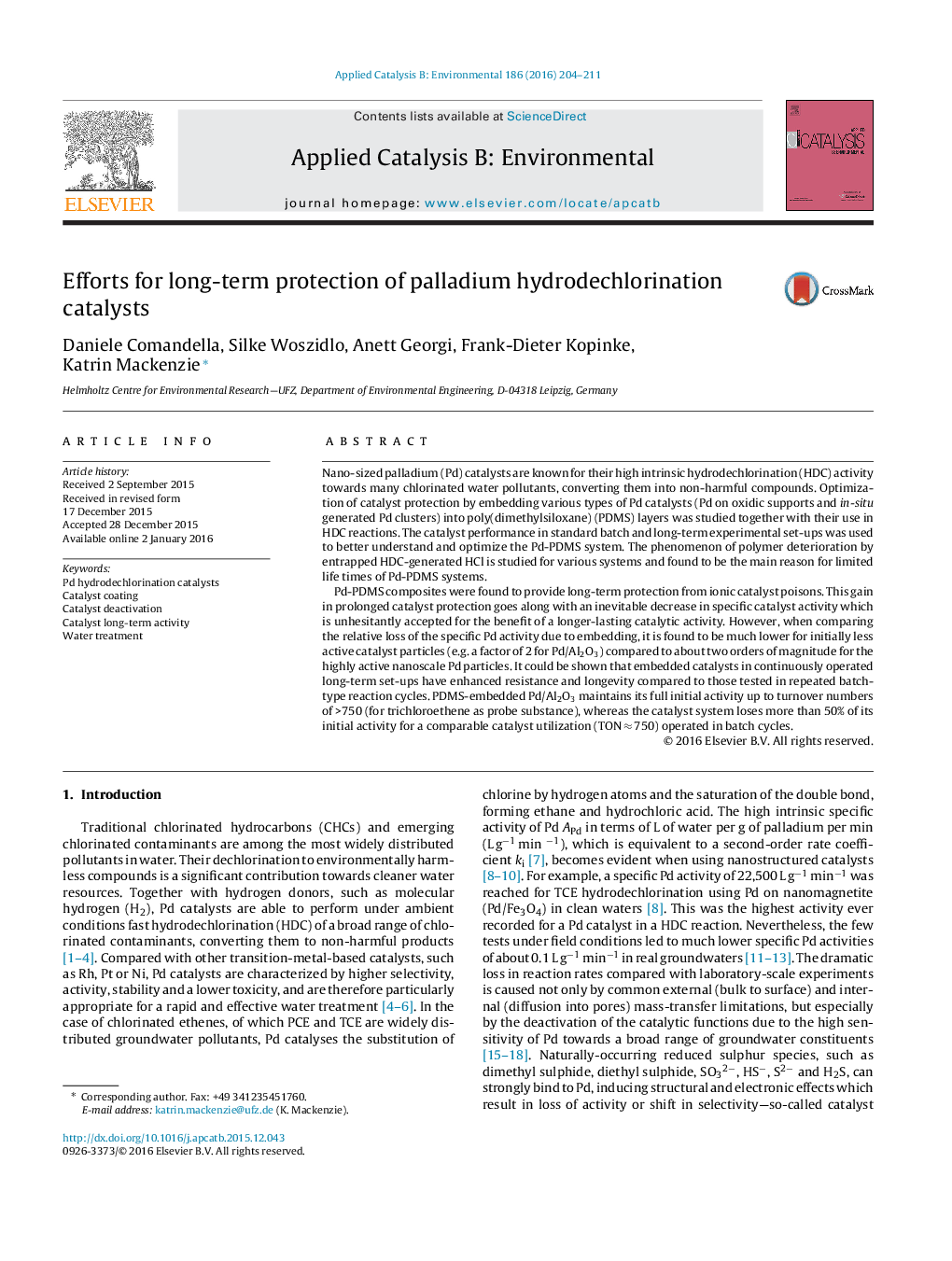| Article ID | Journal | Published Year | Pages | File Type |
|---|---|---|---|---|
| 44845 | Applied Catalysis B: Environmental | 2016 | 8 Pages |
•Long-term stability of Pd in water treatment is achieved for the first time.•Bare Pd nanoparticles and supported Pd clusters are built into PDMS.•PDMS membranes effectively protect Pd catalysts and prevent Pd leaching.•Continuous use of PDMS-Pd assures longer catalyst life compared to cyclic use.•Technical implications for optimized use of Pd-PDMS membranes are discussed.
Nano-sized palladium (Pd) catalysts are known for their high intrinsic hydrodechlorination (HDC) activity towards many chlorinated water pollutants, converting them into non-harmful compounds. Optimization of catalyst protection by embedding various types of Pd catalysts (Pd on oxidic supports and in-situ generated Pd clusters) into poly(dimethylsiloxane) (PDMS) layers was studied together with their use in HDC reactions. The catalyst performance in standard batch and long-term experimental set-ups was used to better understand and optimize the Pd-PDMS system. The phenomenon of polymer deterioration by entrapped HDC-generated HCl is studied for various systems and found to be the main reason for limited life times of Pd-PDMS systems.Pd-PDMS composites were found to provide long-term protection from ionic catalyst poisons. This gain in prolonged catalyst protection goes along with an inevitable decrease in specific catalyst activity which is unhesitantly accepted for the benefit of a longer-lasting catalytic activity. However, when comparing the relative loss of the specific Pd activity due to embedding, it is found to be much lower for initially less active catalyst particles (e.g. a factor of 2 for Pd/Al2O3) compared to about two orders of magnitude for the highly active nanoscale Pd particles. It could be shown that embedded catalysts in continuously operated long-term set-ups have enhanced resistance and longevity compared to those tested in repeated batch-type reaction cycles. PDMS-embedded Pd/Al2O3 maintains its full initial activity up to turnover numbers of >750 (for trichloroethene as probe substance), whereas the catalyst system loses more than 50% of its initial activity for a comparable catalyst utilization (TON ≈ 750) operated in batch cycles.
Graphical abstractFigure optionsDownload full-size imageDownload as PowerPoint slide
